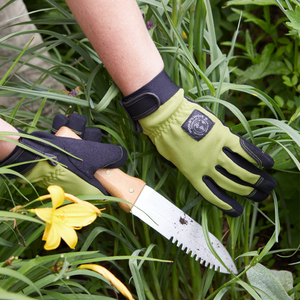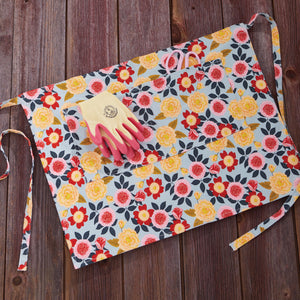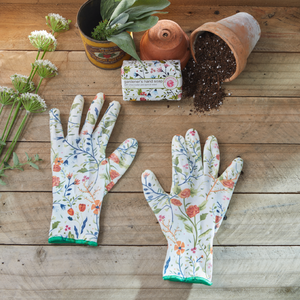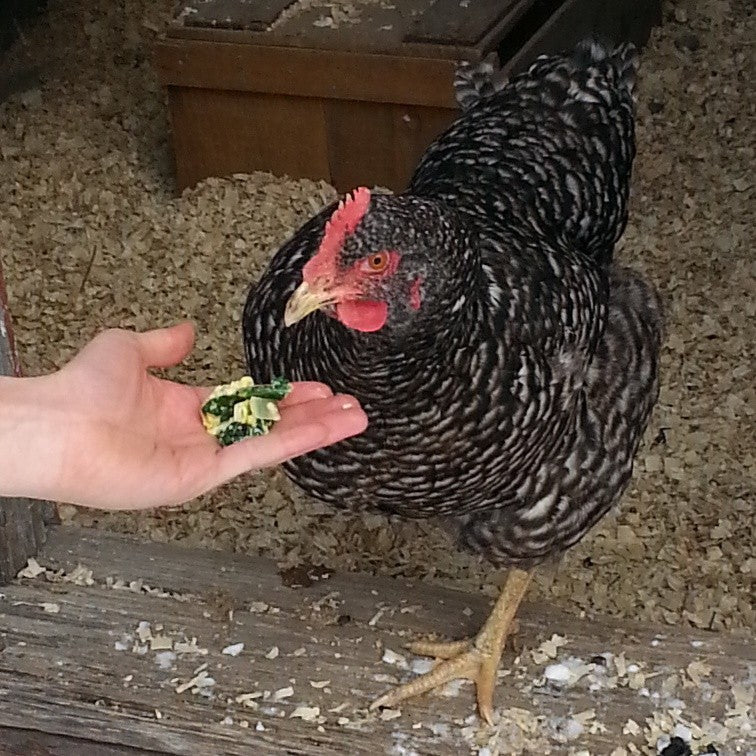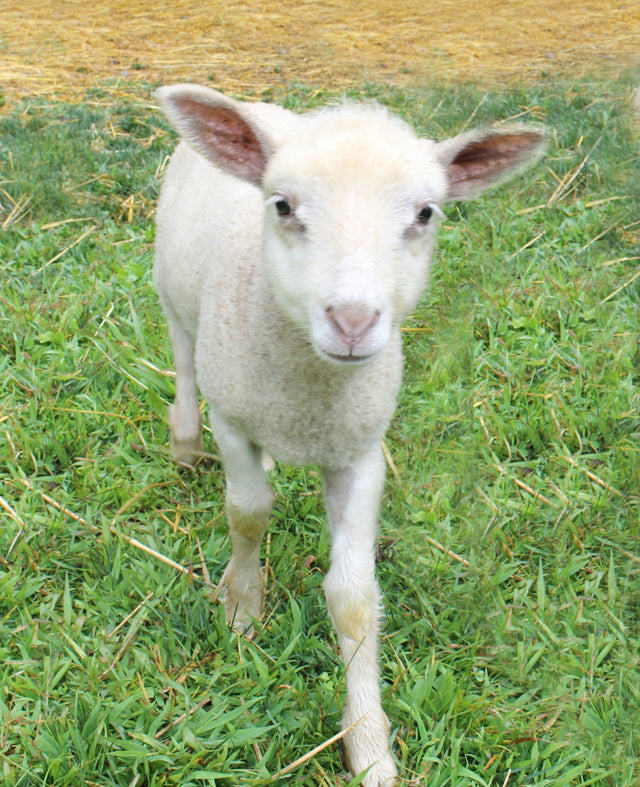
 We asked Ashley English, author of Keeping Chickens, to tell us about her experience and offer some of her chicken wisdom. Here is our exclusive interview with Ashley, and three other chicken keepers:
We asked Ashley English, author of Keeping Chickens, to tell us about her experience and offer some of her chicken wisdom. Here is our exclusive interview with Ashley, and three other chicken keepers:
Meet Ashley English
Womanswork: What are some of the ways someone can acquire chickens?
Ashley English: With the resurgence of interest in keeping a flock of backyard chickens, it's now easier to find chickens than ever. I always encourage people to look locally from resources such as feed & seed stores, area farms, and places such as Craigslist or local classified ads. An area veterinarian might also have suggestions for acquiring birds locally. Online hatcheries such as Murray McMurray and My Pet Chicken are places to look if you can't source nearby or if you are seeking out a specific breed.
 Ashley English wearing Womanswork Goatskin Gloves
Ashley English wearing Womanswork Goatskin Gloves
Womanswork: How do I choose between different types of chickens?
Ashley English: What type of bird might work best for you might not work best for another. Consider what your needs are (do you want chickens for their eggs, for table purposes (meaning to eat), for both eggs and table, for show) and then go from there. Such individual needs will help you determine if what you're looking for is a bird known for prolific egg laying, or that's particularly good to eat, or that has lovely plumage (feathers). From there, decide if you want to get birds as chicks, pullets (females under 1 year of age), hens, or males, as there are pros and cons to each.
Womanswork: Will chickens cause damage in my garden? How can I prevent that?
Ashley English: If you allow your flock to free range, bear in mind they will scratch and mar the landscape in their hunt for bugs (chickens are insectivores primarily, so bugs are what they really want to eat most of all). They'll also take opportunistic pecks and nibbles of anything that interests them. Should you wish to keep them away from, say, some prize-winning rose bushes or your heirloom tomatoes that are just beginning to ripen, then you'll need to put up a barricade.
 Womanswork: Do chickens get rid of ticks?
Womanswork: Do chickens get rid of ticks?
Ashley English: It’s bugs that chickens truly want to consume. Ticks are part of that category, making a free-ranging flock an ideal low tech means of keeping tick populations in check in your area.
Womanswork: What can I expect in terms of egg production from my flock?
Ashley English: A pullet will begin laying eggs at some time between 16-18 weeks of age. She'll be her most prolific in the first two years of her life. After that, egg-laying tapers off, but doesn't ever cease entirely. You'll want to keep that in mind as your flock ages, rotating older birds out (if you choose to do so, via culling-you can also simply allow them to age which is what I've done, with some members of my flock now 6 years old and still laying, albeit about every other day or so) and younger birds in.
Keep in mind also that chickens may taper off laying during the winter. They get their cue to lay from a signal in their pituitary gland. When there is less then 14 hours of sunlight in a day, the gland sends a message to curtail laying, and conversely to resume production of eggs when there is more than 14 hours of sunlight in a day. Bear in mind also that in late summer/early autumn, chickens will shed their feathers, or "molt." When this happens, they will not be laying eggs, as the calcium that would otherwise go into shell formation will be re-routed to form the quills for new feathers.
 Ashley English with her son Huxley
Ashley English with her son Huxley
Womanswork: How do I keep my chickens safe, while giving them enough freedom?
Ashley English: The predators present in your area will be based on your geographic location. Where I live, which is in a deeply forested mountain cove , there are aerial threats (from chicken hawks and owls), climbing threats (from raccoons), and "wiggling", above-ground threats (from snakes and weasels). To keep my flock safe, I have attempted to install predator-proofing lines of defense in numerous ways, from overhead netting to buried fencing to barbed wire atop the fencing. Ask other chicken-keepers in your area what kinds of threats are present and prepare and fortify their housing accordingly.
Meet Shayla Grover
We discovered our second chicken owner through Instagram, where she has a popular page @letsgetsomechickens. After falling in love with her photos of chickens and pigs cohabitating on her Cape May, NJ farm, and the captions that went with them, we asked her to tell us about her experience as a chicken owner.
 "Turnip wasn't super impressed with it, but @rwolf4 (my boyfriend) got me this pretty accurate shirt for my birthday"
"Turnip wasn't super impressed with it, but @rwolf4 (my boyfriend) got me this pretty accurate shirt for my birthday"
Womanswork: What kinds of chickens do you have, and how did you choose them? How many do you have?
Shayla Grover: We have about 450 laying hens right now, and 100 2 week old Ameraucanas in the brooder. For production purposes, we have a lot of Rhode Island Reds - they make up about 75% of our current flock. I don’t have anything against Reds personally, but I do find them a tad boring. Some of my favorite breeds, chosen mostly for their docile and friendly dispositions, are Australian Australorps, Turkens (people tend to either love or hate them, I think they’re cute!) and Ameraucanas. These three breeds are all great layers as well, plus everyone always loves the green and blue tinted eggs of the Ameraucanas!
 "This little stinker. I was trying to get a photo of her napping with the hen, but she opened her eyes at the last second."
"This little stinker. I was trying to get a photo of her napping with the hen, but she opened her eyes at the last second."
Womanswork: How do you keep your chickens safe, while giving them enough freedom?
Shayla Grover: We have been lucky (knock on wood) in that we haven’t had too much of a predation problem. Our biggest threat is from hawks, during their fall migration. Cape May is a hot spot from late August through December, when 50,000 hawks of 15 different species pass through. Sadly, it is just a part of raising chickens that we will lose a few to them. Our three roosters also do their best to keep an eye out for danger and warn their ladies to take cover.
Chickens instinctively know that when it starts to get dark out, it’s time to go home! Even our most adventurous free rangers “come home to roost” each night. They simply need to be closed in at night and let out in the morning! Of course, you want to make sure the coop is predator-proof before locking your girls in there!
Womanswork: Getting eggs. What to expect with that. Do they lay in winter?
Shayla Grover: Even though our ladies are free-rangers, they are mostly good about laying in their nest boxes. There are a few rogue nests around the farm that I check each day, and I am sure there are more that I will just never find!
 "Eggs are like people - it's what's on the inside that matters."
"Eggs are like people - it's what's on the inside that matters."
Young hens, called pullets, will start laying eggs at an average of 6 months old, and depending on their breed and living conditions, will lay 200-300 eggs a year for their first couple years. The older ladies start to take it easy, so it’s a good idea to add new girls to your flock before they stop altogether!
Production absolutely goes down over winter. Hens need 15 hours of light a day to lay eggs, and you can encourage year round laying by using artificial light inside the coop, but we don’t do that. I think that our ladies have earned a bit of a vacation, and lucky for us, we live in a very seasonal area, so the demand for our eggs declines just as production does!
Womanswork: How do the pigs relate to the chickens?
Shayla Grover: Well, the chickens and pigs aren’t cohabitating on purpose. Some of the chickens just seem to like living with the pigs better than they like living with their own kind! I can’t really blame them, it’s always warm and cozy with all that piggy body heat, and the pigs get all the good slop too! The pigs don’t seem to mind either, since some of the hens lay their eggs in the pig’s bedding, literally “breakfast in bed” for the pigs! We did hang a few milk crates from the wall of the pig house to try and save some of those eggs from becoming pig snacks, and most of the “pig chickens” use them now. And, I’m not going to lie - seeing baby piglets cozy up to a hen the same size as they are is pretty darn cute!
 Shayla Grover with Turnip
Shayla Grover with Turnip
Growing up, we always had a couple dozen chickens around. My Mom let each of us help put together the chick order, and it was (and still is) so much fun to pour over the catalog, trying to decide which breeds to select.
I attended college in Philadelphia, and definitely missed having chickens around! I am, admittedly, a “crazy chicken lady,” but I could honestly just watch them interact all day. Chickens are such a quintessential part of life to me, and their cheerful peeps and clucks, and silly mannerisms, absolutely make my day every day!
Meet Eve Winslow
Our daughter Eve Winslow is our third chicken keeper interviewee. Eve lives in a very cold climate, Woodstock, VT, so she brings a little different perspective to the topic.
 Eve Winslow with Penny
Eve Winslow with Penny
Womanswork: What kinds of chickens do you have, and how did you choose them?
Eve Winslow: I became a chicken owner on June 20th, 2013. We got Annie, a Buff Orpington hybrid hen from a friend who needed to find a home for her. Two weeks later we got Merriweather, a Barred Rock hen, and Penny, a Rhode Island Red, from a local person who breeds heritage chickens. I wanted 3 different breeds to learn about their different personalities and different eggs. And they look pretty together. I had planned to add new ones each year, but for now I’m committed to owning a flock of 3. They produce the perfect amount of eggs for two people, it’s easy to clean their coop, and it’s not as likely that predators will catch their whiff.
 Woodstock, VT milkhouse turned chicken coop
Woodstock, VT milkhouse turned chicken coop
Womanswork: How do you keep your chickens safe, while giving them enough freedom?
Eve Winslow: We have a very secure chicken coop behind our house that used to be a milkhouse. That’s where they spend the night and most of the winter. Nate built an outdoor chicken coop on wheels (chicken tractor) that we move around the yard so they always have fresh lawn to scratch for bugs and other things. They stay in the moveable coop part of the day, but they also get to free range for about 3-4 hours each day as long as I am outside with them or in my upstairs studio, which has a view of the backyard. After Penny was attacked and nearly killed by a fox this summer, I have gotten into the habit of calling out to them from my studio about every 20 minutes (crazy?), just to make sure they're staying close to home. I’ve started to train them to respond to my call by giving them treats when they come. It works!
Womanswork: In such a cold climate, do your hens lay in winter?
 Feeding Merriweather a warm snack on a cold day
Feeding Merriweather a warm snack on a cold day
Eve Winslow: During warm months we get about 3 eggs a day, one from each hen. In the winter we get a little less than that, but their production doesn’t fall off that much. We don’t give them supplemental light, which would increase their production in winter because each hen lays just so many eggs in a lifetime and we have no need to hurry them along. After about 2 years of age their egg laying production will drop off a little, but it can keep going until they’re about 5 years old or even sometimes longer.
But I do open the door to their coop in the winter to let light in during the day. And I also bring them a hot breakfast most mornings made of oatmeal and mashed squash or sweet potato, with a little grit mixed in to aid digestion and crushed oyster shell for calcium. We don’t heat the coop because if we were to lose power the sudden cold could cause them to go into shock. On a couple of very cold nights we did turn on the heat lamp, but I’m so concerned about fire that I was checking them constantly during the night. Chickens do acclimate to the cold and they huddle together and puff up to stay warm. Their water bowl is heated but on a very cold night I take that out of the coop because the moisture it produces can cause frostbite.
Womanswork: What has surprised you the most about having chickens?
Eve Winslow: I was not expecting them to be so charming. And they each have a distinct personality like people. Annie is at the top of the pecking order, even though Merriweather is the largest. They have their favorite spots on the roosting bar and I can hear them argue and squabble about who gets to sleep where, but in the end Annie always gets her way. I know I anthropomorphize them alot, but it’s been so much fun to see their individual personalities take shape. Before I got them I was planning to cull the flock for meat, but that would be impossible for me to do now. As long as they live they have a home here.
Meet Dorian Winslow
 Eudora and Jamaica on the railing of our front porch
Eudora and Jamaica on the railing of our front porch
I decided to write my own account because I was a chicken owner and my experience may be instructive to others.
Tom and I got our chickens from a friend who ordered them in the mail. Yes, the US Postal Service will mail day old chicks all over the country. Usually when you order by mail you have to meet a minimum of 25 chicks or so. Our friend only wanted about 15 so he was looking for homes for the others. We committed to 3 and then left them with him to incubate in a warm cage until they were about 3 months old. In the meantime we prepared our chicken coop. We converted a small lean to shed on the side of our garage into a coop, then added an 8-foot long chicken wire run on the outside that was connected with a little swinging door built into the side of the coop.
 Chicken Coop with Daisy
Chicken Coop with Daisy
We picked up our pullets in May and showed them their new home. They seemed happy, especially because we let them free range all the day long when we were at home. They were Araucana chickens, known for their beautiful plumage and friendly-to-people personalities. I named them after three female literary giants: Eudora , Jamaica and Harper . In August my husband and I were traveling out of town when we got a phone call from our neighbors: the first egg had been laid. It was a beautiful pale blueish green, which is another hallmark of the Araucana breed of chicken. Click here for a video with me and my chickens.
 Our first egg!
Our first egg!
Unfortunately it went downhill from there. We got attached to the chickens and thought of them like pets and they got taken, one by one over the course of the next year, by foxes during broad daylight when everyone was home and even our dog was about.
We have not been able to figure out how to keep our chickens safe while giving them an enjoyable free ranging lifestyle, so for now we are chickenless. If we figure it out we may try again.
